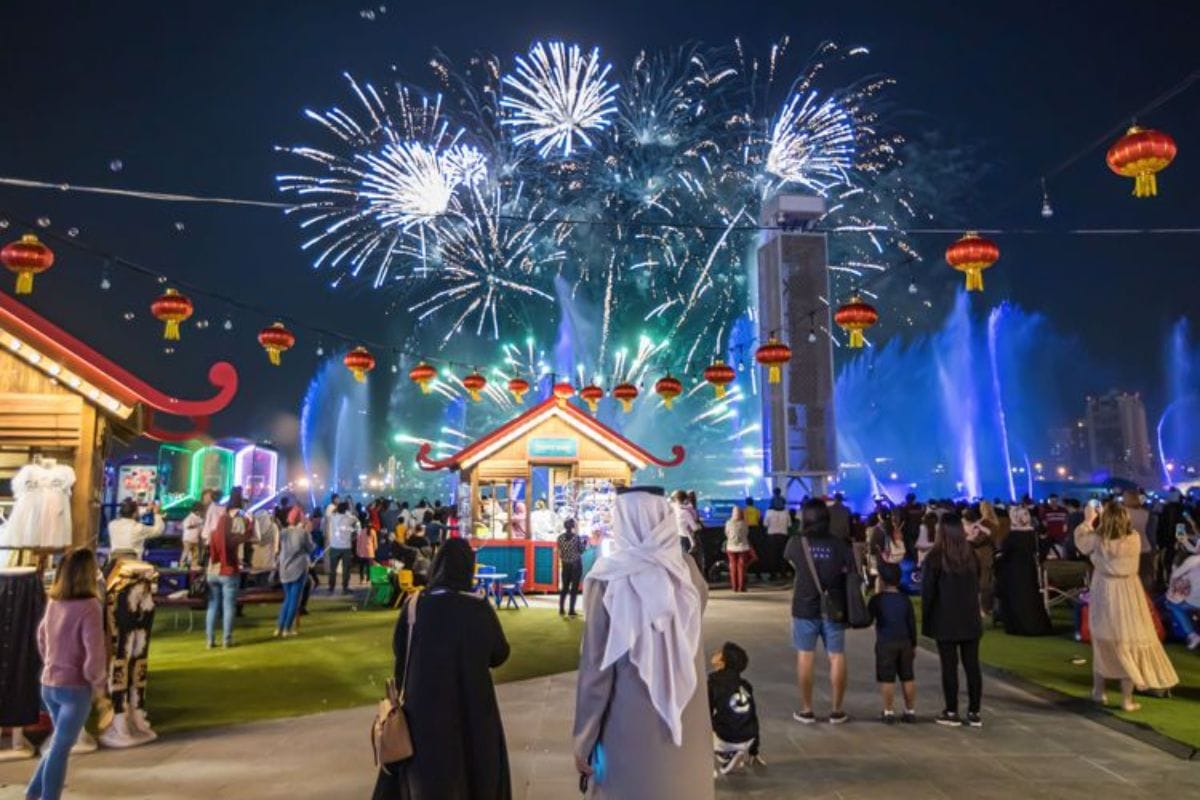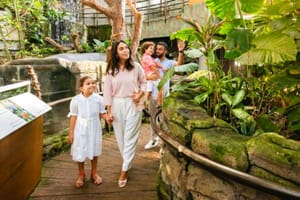Dubai is a city of contrasts, where the past and future coexist in perfect harmony. Among its architectural marvels and state-of-the-art developments, the city’s souqs stand as enduring symbols of its cultural identity. Once vibrant centres of trade, these markets were places where merchants exchanged not only goods but stories, traditions, and connections.
Exploring a souq in Dubai offers more than shopping; it’s an immersion into the city’s heritage. The rich aroma of spices, the glitter of handcrafted gold, and the colourful array of textiles reflect the region’s deep-rooted history. Over time, these traditional spaces have been reimagined into modern settings, retaining their charm while embracing contemporary design and conveniences.
The evolution of souqs in Dubai mirrors the city’s growth—a journey from its origins as a trading hub to its emergence as a global destination. Traditional souqs continue to thrive, offering a glimpse into the past, while new-age markets and retail spaces have redefined what it means to shop in style. This blend of authenticity and innovation captures the spirit of Dubai, a city that honours its roots while shaping its future.
This article explores the transformation of Dubai’s souqs, delving into their history, their role in shaping culture, and how they’ve adapted to modern life. These are spaces where tradition meets progress, creating experiences that connect people to the soul of the city.
The Roots: Traditional Souqs
Dubai’s traditional souqs offer a glimpse into its humble beginnings, long before skyscrapers defined its skyline. These markets were the heart of the city’s trade economy, connecting merchants from across the globe. Each souq carries its own unique story, providing a tangible link to Dubai’s past.
Gold Souk

In the historic district of Deira, the Gold Souk stands as a shining symbol of Dubai’s illustrious trade history. Its labyrinth of alleyways is home to over 300 retailers, each showcasing breathtaking displays of gold, diamonds, and precious stones. Walking through the souk, visitors are greeted with windows brimming with intricate necklaces, bracelets, and bangles that reflect both modern and traditional designs.
What sets the Gold Souk apart is its authenticity. Unlike the polished interiors of modern malls, this market exudes old-world charm, with its wooden archways and bustling crowd of merchants and buyers. Negotiation is not only expected here but also celebrated, turning the act of purchasing jewellery into a cultural experience.
A visit to the Gold Souk isn’t complete without witnessing its pièce de résistance: the Najmat Taiba, the world’s largest gold ring, weighing a staggering 64 kilograms. It’s a testament to Dubai’s penchant for record-breaking achievements and its reputation as the “City of Gold.” For decades, this souk has been a destination for shoppers and those seeking to connect with the city’s trading heritage.
Spice Souk

Just a stone’s throw from the Gold Souk lies the Spice Souk, a sensory paradise that offers a slice of the old Silk Road. The moment you enter, you’re enveloped by the rich aroma of exotic spices, from saffron and cinnamon to dried rose petals and frankincense. Large burlap sacks and wooden barrels brim with vibrant spices, dried fruits, nuts, and teas, creating a kaleidoscope of colours and fragrances.
The Spice Souk is not only a place to buy ingredients but also to learn about them. Vendors enthusiastically explain the origins, uses, and benefits of their products, whether it’s Iranian saffron prized for its flavour and colour or dried hibiscus known for its health properties.
Beyond its commercial appeal, the Spice Souk reflects Dubai’s role as a cultural melting pot. Traders from India, Iran, Pakistan, and other neighbouring countries converge here, bringing with them stories, recipes, and traditions. Visitors often find themselves drawn into these narratives, gaining a deeper appreciation for the spices that have shaped cuisines around the world.
Textile Souk

On the opposite side of Dubai Creek, in the bustling district of Bur Dubai, lies the Textile Souk. This market, with its wooden roofs and shaded courtyards, offers a tranquil escape from the fast pace of modern Dubai.
The Textile Souk is a treasure trove for those with an eye for craftsmanship. Here, stalls overflow with bolts of fabric in every imaginable colour and texture—silks, cotton, embroidered linens, and brocades. Traditional garments like kanduras and abayas hang alongside contemporary creations, blending heritage with innovation.
What makes the Textile Souk particularly special is its connection to the past. Many of the vendors are second or third-generation traders, each with a wealth of knowledge about their craft. For those seeking unique souvenirs, the souk offers everything from handwoven pashminas to intricate tapestries. Tailors on-site can even create bespoke outfits, adding a personal touch to the shopping experience.
For creatives and designers, the Textile Souk is a haven of inspiration. Its array of materials and patterns serves as a reminder of Dubai’s history as a hub for textile trade, a legacy that continues to thrive today.
These traditional souqs are more than markets; they are living museums that preserve Dubai’s heritage. Their enduring presence in a city known for constant reinvention is a testament to the importance of honouring roots. You will leave with unique treasures and a deeper understanding of the culture and history that built Dubai into what it is today.
The Transition: Early Modern Souqs
As Dubai began to grow into the cosmopolitan hub we know today, its marketplaces evolved to reflect the city’s changing identity. Early modern souqs emerged as a bridge between tradition and innovation, retaining the charm of traditional markets while introducing contemporary elements to cater to a global audience. These spaces represent a pivotal moment in Dubai’s journey, blending heritage with luxury and convenience.
Souk Madinat Jumeirah

Within the luxurious Madinat Jumeirah resort, Souk Madinat Jumeirah is a reinterpretation of a traditional Arabian bazaar, infused with modern comforts and elegance. With its meandering waterways, wooden archways, and lantern-lit corridors, the souk offers an atmosphere that feels both nostalgic and opulent.
The souk is a labyrinth of boutiques, art galleries, and souvenir shops, where visitors can discover handcrafted jewellery, unique home décor, and bespoke clothing. Yet, it’s more than a shopping destination. The variety of restaurants and cafés here, many offering al fresco dining with views of the iconic Burj Al Arab, make it an ideal spot for a leisurely evening.
Souk Madinat also hosts live performances and events, adding a dynamic cultural layer to its offerings. It’s a place where tradition meets entertainment, providing visitors with an immersive Arabian experience while embracing the luxuries of modern Dubai.
Souk Al Bahar

Situated in the heart of Downtown Dubai, Souk Al Bahar is a stunning example of how traditional architecture can coexist with urban sophistication. With its classic Arabian design—stone archways, intricate carvings, and lantern-lit pathways—the souk feels like a journey back in time, despite its location next to the modern marvel of Burj Khalifa.
Souk Al Bahar, which translates to “Market of the Sailor,” draws inspiration from Dubai’s maritime heritage. Its offerings range from boutique shops selling regional handicrafts to upscale dining options that attract both locals and tourists. Dining on the terraces overlooking the Dubai Fountain is a highlight, combining culinary excellence with breathtaking views.
In many ways, Souk Al Bahar is a reflection of Dubai’s duality—a city deeply rooted in its past yet always looking toward the future. Its ability to balance authenticity with modern convenience makes it a quintessential Dubai experience.
These early modern souqs are cultural touchpoints that showcase Dubai’s ability to honour its traditions while embracing change. By merging the aesthetics of the past with the demands of the present, these spaces offer visitors a unique experience that is both rooted in heritage and reflective of Dubai’s global outlook.
The Future: Modern Retail Inspired by Souqs
Dubai’s souqs have not only preserved their cultural significance but have also inspired a new wave of retail spaces that embrace the concept of experiential shopping. These modern marketplaces redefine the traditional souq by incorporating cutting-edge design, art, and technology while maintaining the essence of discovery and connection.
City Walk

City Walk is a prime example of how Dubai reimagines the concept of a souq for the modern age. Situated near Downtown Dubai, this open-air lifestyle destination combines the vibrancy of a marketplace with the sophistication of high-end retail. Its contemporary design, lined with street art and lush greenery, creates an inviting space for visitors to explore.
Here, shopping is only part of the experience. City Walk’s array of international boutiques, gourmet dining options, and entertainment venues cater to a cosmopolitan audience. The pedestrian-friendly layout encourages leisurely strolls, while the interactive art installations and seasonal events add a dynamic element to the visit. City Walk captures the spirit of the traditional souq by fostering a sense of community in a distinctly modern setting.
The Outlet Village

Located in Jebel Ali, The Outlet Village is a unique interpretation of the souq concept, inspired by the architecture of Italian villages. Its cobblestone streets, rustic archways, and Mediterranean-style plazas create an atmosphere that feels both luxurious and nostalgic.
This retail destination specializes in offering premium brands at discounted prices, attracting shoppers looking for value without compromising on quality. Beyond the shopping, The Outlet Village offers a serene ambience, with fountains and shaded walkways providing a respite from the bustling city.
The juxtaposition of Dubai’s forward-thinking retail strategies with the charm of old-world Europe highlights the city’s ability to draw inspiration from diverse cultures while creating something uniquely its own.
Alserkal Avenue

While not a souq in the traditional sense, Alserkal Avenue in Al Quoz represents the evolution of the marketplace into a hub for creativity and culture. This industrial warehouse district has been transformed into a thriving community of art galleries, design studios, and boutique shops, making it a haven for Dubai’s creative minds.
The focus here is on discovery—visitors can explore contemporary art exhibits, attend workshops, or shop for unique handmade items. The integration of cafés and performance spaces adds to the appeal, making Alserkal Avenue a place where people come not just to shop but to connect and create.
These modern retail spaces reflect Dubai’s vision for the future—a city that values innovation while respecting its roots. By reinterpreting the traditional souq for contemporary audiences, Dubai has created spaces that are as much about experience as they are about commerce. In doing so, the city ensures that the spirit of the souq lives on, adapting to the needs of a rapidly changing world.
Why This Blend Works
Dubai’s approach to preserving the essence of souqs while transforming them to fit the modern world speaks volumes about the city’s ability to balance tradition and innovation. The blend of old-world charm and contemporary sophistication is not just about aesthetics; it’s about creating experiences that resonate with both locals and visitors.
Cultural Authenticity Meets Global Appeal
At their core, souqs are about more than commerce—they are spaces for connection, storytelling, and cultural exchange. Dubai’s traditional souqs, like the Gold Souk and Spice Souk, keep this authenticity alive. By maintaining their historical character, these markets offer a sensory experience that allows visitors to immerse themselves in Dubai’s heritage.
Modern reinterpretations, such as Souk Madinat Jumeirah and City Walk, build on this foundation while catering to global tastes. They incorporate the allure of tradition into sleek, innovative settings, creating environments that are accessible and appealing to a diverse audience. This balance ensures that Dubai remains relevant as a destination for both cultural tourism and high-end retail.
The Emotional Connection of Discovery
What makes souqs, both traditional and modern, so captivating is the sense of discovery they inspire. Wandering through a souq feels like embarking on a journey where each corner holds something unexpected—be it a rare spice, a handcrafted textile, or a stunning piece of art.
Modern spaces like Alserkal Avenue or The Outlet Village take this concept further, transforming shopping into an experiential adventure. Whether it’s stumbling upon a hidden art gallery or finding a luxury item at a discounted price, these spaces keep the excitement of discovery alive, making them much more than transactional destinations.
A Nod to Dubai’s Spirit of Innovation
Dubai’s evolution of souqs is a testament to its broader ethos of reinvention. The city has found a way to honour its past while pushing boundaries, blending cultural authenticity with cutting-edge retail concepts. This ability to innovate while preserving heritage is what sets Dubai apart, creating a marketplace ecosystem that feels both timeless and forward-thinking.
Why It Resonates
In an age where retail is often dominated by impersonal e-commerce, Dubai’s souqs remind us of the human element in trade. They provide spaces where people can connect, explore, and celebrate the art of craftsmanship. Whether steeped in history or brimming with modern flair, each souq offers a piece of Dubai’s story, making the blend of tradition and modernity not just effective, but essential.
Dubai’s souqs are a reflection of the city’s soul. From the narrow alleys of the Gold and Spice Souks to the elegant corridors of Souk Madinat Jumeirah and the futuristic avenues of City Walk, these spaces tell a story of transformation. They remind us of Dubai’s origins as a modest trading hub while showcasing its rise as a global destination that effortlessly blends tradition with innovation.
In a city constantly looking forward, Dubai’s souqs anchor it to its past, offering visitors a shopping experience with a journey through time and culture. As these marketplaces continue to evolve, they stand as symbols of Dubai’s unique ability to honour its heritage while embracing the future, ensuring that the spirit of the souq endures for generations to come.
Also Read:

















